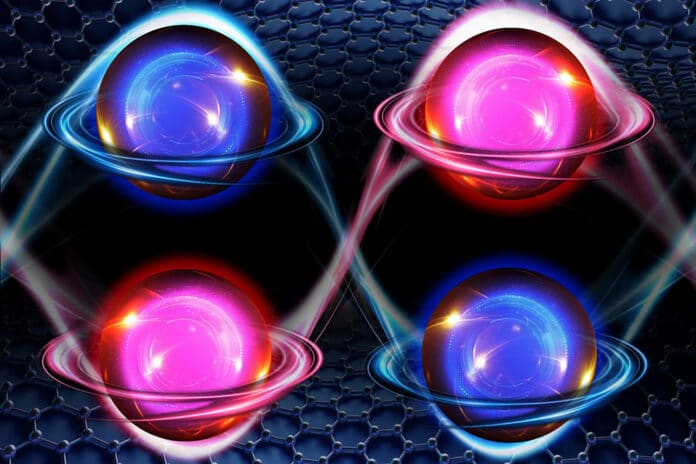Graphene is exceptionally strong. Additionally, the material can exhibit startling electronic behavior when layered and bent in particular ways.
MIT physicists have now identified another intriguing characteristic of graphene: In a very uncommon, “multiferroic” state, which the team has named ferro-valleytricity, graphene exhibits both unusual magnetism and an exotic sort of electrical behavior when stacked in five layers in a rhombohedral configuration.
This is the first time scientists have observed ferro-valleytricity and unconventional magnetism in five graphene layers. However, they didn’t see this property in one, two, three, or four layers.
This discovery could help engineers create ultra-low-power, high-capacity data storage devices that can store double the amount of information compared to conventional devices.
Scientists were keen to determine if graphene could have multiferroic behavior. Scientists discovered otherwise hidden quantum interactions thanks to graphene’s fragile structure and unique environment.
More specifically, scientists were looking for environments where electrons are slowed down — where their interactions with the surrounding lattice of atoms are small, so their interactions with other electrons can come through.
Using simple calculations, the team discovered that some coordinated activity among electrons should occur in a structure of five graphene layers layered on top of one another in a rhombohedral arrangement.
Team leader Long Ju, assistant professor of physics at MIT, said, “In five layers, electrons happen to be in a lattice environment where they move very slowly, so they can interact with other electrons effectively. That’s when electron correlation effects dominate, and they can coordinate into certain preferred, ferroic orders.”
Scientists started experimenting with a small block of graphite, from which they carefully exfoliated individual flakes. Thanks to their optical techniques, they could examine each flake, looking specifically for five-layer flakes arranged naturally in a rhombohedral pattern.
At temperatures just over absolute zero, scientists analyzed a few five-layer flakes they had separated. All other effects, such as thermally induced disorders inside graphene, should be muted in such extremely cold temperatures, allowing for the emergence of electron interactions. Two ferroic orders—or sets of coordinated behaviors—emerged when scientists analyzed how electrons responded to magnetic and electric fields.
The first ferroic property was the electrons’ coordinated orbital motion, resembling planets revolving in the same direction.
The electronic “valley” of graphene was the subject of the second ferroic property. There are specific energy levels that electrons can occupy in any conductive substance. The lowest energy state where an electron can exist naturally represents a valley. In graphene, two valleys may exist. Electrons typically settle evenly into both valleys with no preference for one.
However, the team discovered that in five-layer graphene, the electrons started to coordinate and chose to dwell in one valley over the other. The structure had an uncommon, multiferroic state due to this second coordinated behavior, which pointed to a ferroic property that interacted with the unusual magnetic of the electrons.
Co-first author Zhengguang Lu said, “We knew something interesting would happen in this structure, but we didn’t know exactly what until we tested it. It’s the first time we’ve seen a ferro-valleytronics, and also the first time we’ve seen a coexistence of ferro-valleytronics with unconventional ferro-magnet.”
Journal Reference:
- Han, T., Lu, Z., Scuri, G. et al. Orbital multiferroicity in pentalayer rhombohedral graphene. Nature (2023). DOI: 10.1038/s41586-023-06572-w
